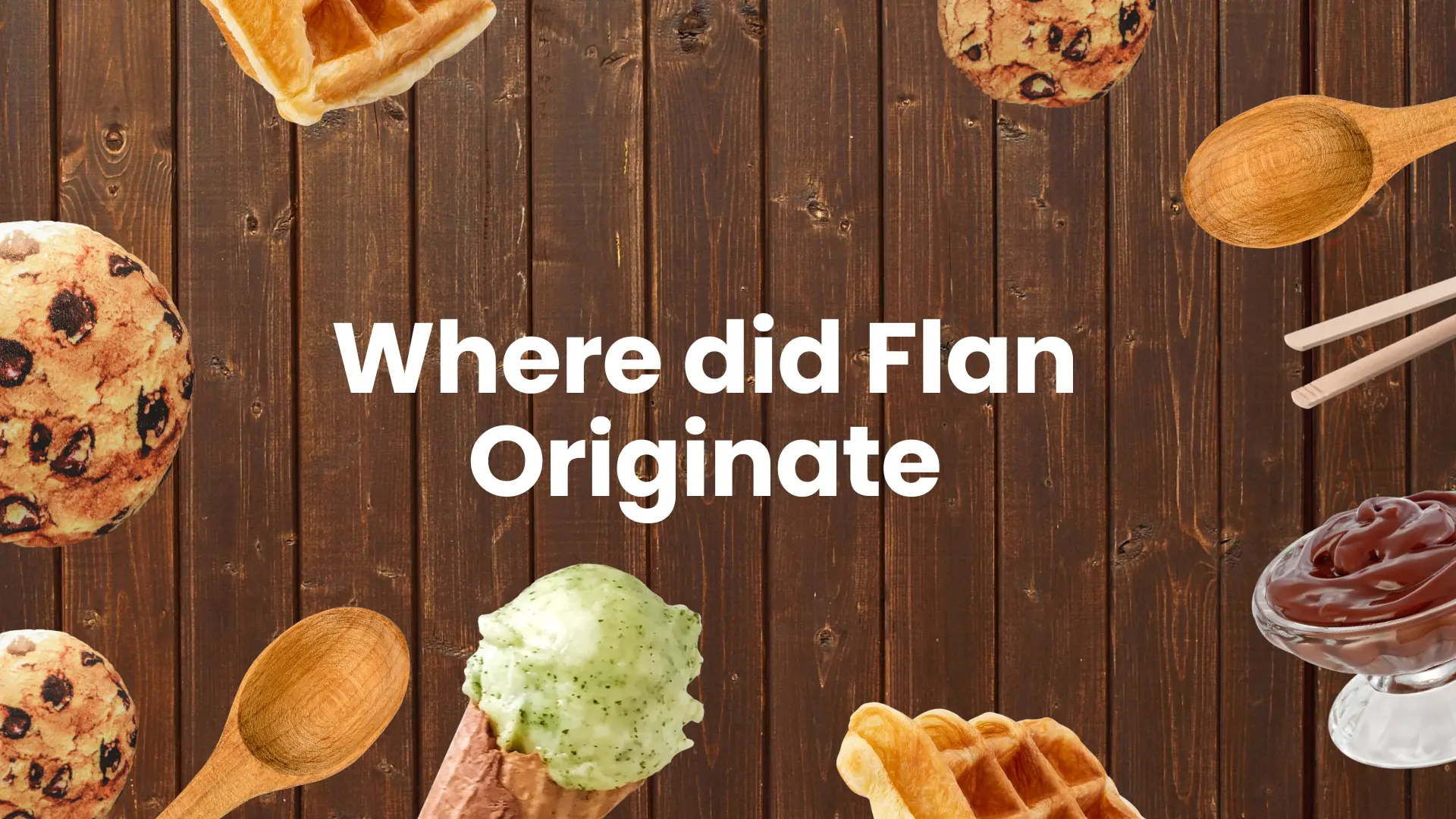Where did Flan Originate

Flan, a creamy custard dessert topped with caramel, is beloved worldwide. Its rich, smooth texture and sweet, slightly bitter caramel contrast make it a favorite across cultures. But where did flan originate? This dessert has a fascinating history, tracing back to ancient civilizations and evolving into various regional delicacies.
Origins of Flan
Ancient Roman Beginnings
Flan’s origins date back to ancient Rome. Romans, known for their agricultural advancements, domesticated chickens, which led to an abundance of eggs. This surplus encouraged the development of egg-based dishes, including early versions of custards. Unlike the sweet flan we know today, these Roman versions were often savory, incorporating ingredients such as eel and herbs.
The word “flan” is derived from the Old French term “flaon,” which itself comes from the Late Latin word “fladon,” meaning “flat cake.” Over time, the Romans experimented with sweet variations, using honey as a natural sweetener. As the Roman Empire expanded, so did its culinary traditions, laying the groundwork for flan’s transformation into a global dessert.
Medieval European Transformation
During the Middle Ages, flan evolved further. As sugar became more widely available, people began incorporating it into the custard, shifting the dish from savory to sweet. Honey was still a common sweetener, but as trade routes expanded, cane sugar from the Middle East became more accessible to Europeans.
Medieval Europeans embraced flan as a festive treat, often preparing it for religious holidays and feasts. By this time, flan had become more recognizable as the creamy dessert we know today. As the dessert gained popularity, different regions began adding their own unique twists, setting the stage for flan’s journey across Europe and beyond.
Flan’s Journey Through Spain and France
Spanish Adaptation
Spain played a crucial role in refining flan into a dessert staple. The Spanish version, “flan de huevo,” consists of simple ingredients: eggs, milk, and sugar. The defining characteristic of Spanish flan is its caramel topping, which forms when sugar is melted and hardened before the custard mixture is poured in.
Flan became a beloved dish in Spain, often served during special occasions and family gatherings. Spanish cuisine’s emphasis on rich, simple flavors allowed flan to remain a popular dessert for centuries. It eventually became a fundamental part of Spain’s culinary identity, and it was only a matter of time before the Spanish introduced it to other parts of the world.
French Influence
While Spain perfected its version of flan, France developed a similar dessert known as “crème caramel.” Though the two are often confused, they have slight differences in texture and preparation. Crème caramel is known for its silky-smooth consistency, achieved through precise cooking techniques such as baking in a water bath (bain-marie).
French cuisine, famous for its elegance and refinement, incorporated crème caramel into fine dining. The dish became synonymous with French patisseries and high-end restaurants, further elevating its status as a sophisticated dessert. Though both Spain and France contributed to the evolution of custard-based desserts, flan remained distinct in its preparation and cultural significance.
Flan’s Expansion to the Americas
With Spain’s extensive colonization efforts, flan found its way to the Americas, where it took on new life. Spanish explorers and settlers brought their culinary traditions with them, including the beloved flan. Over time, Latin American cultures embraced the dish and adapted it to include local flavors and ingredients.
In Mexico, for example, flan became an essential dessert, often flavored with vanilla, citrus, or even cinnamon. Mexican flan is typically denser than its European counterpart due to the use of condensed milk. In Puerto Rico and the Dominican Republic, coconut milk is sometimes added for a tropical twist.
Each Latin American country has developed its own version of flan, reflecting the diverse influences of indigenous, African, and European culinary traditions. The dessert has become deeply ingrained in Latin American cuisine, served at celebrations, family gatherings, and even religious festivities.
Modern Variations and Cultural Significance
Today, flan is enjoyed in many forms worldwide, with each culture adding its unique touch. In the Philippines, a Spanish-influenced former colony, “leche flan” is a popular dessert known for its rich and creamy texture. Made with condensed milk and egg yolks, it is denser and more custard-like than traditional Spanish flan.
Other variations include:
- Cuban Flan: Often made with coconut milk or even rum for added depth of flavor.
- Argentinian Flan: Frequently served with “dulce de leche,” a caramelized milk sauce that enhances its sweetness.
- Japanese Purin: A flan-like dessert that has a lighter texture and is often served in individual portions.
Flan’s versatility has allowed it to transcend cultures and generations, remaining a timeless favorite. Whether served in a fine-dining restaurant in Paris, a street food market in Mexico City, or a family gathering in Manila, flan continues to bring people together with its delightful taste and rich history.
Conclusion
Flan’s journey from ancient Rome to modern kitchens worldwide is a testament to its universal appeal. What started as a simple egg-based dish has evolved into a global delicacy, shaped by various cultures and culinary innovations. Its adaptability, rich flavors, and creamy texture ensure that flan remains a cherished dessert across generations.
No matter where you are, a slice of flan connects you to centuries of tradition, history, and cultural exchange. So next time you indulge in a piece of this caramel-topped treat, remember that you are enjoying a dessert with roots that stretch back thousands of years.





